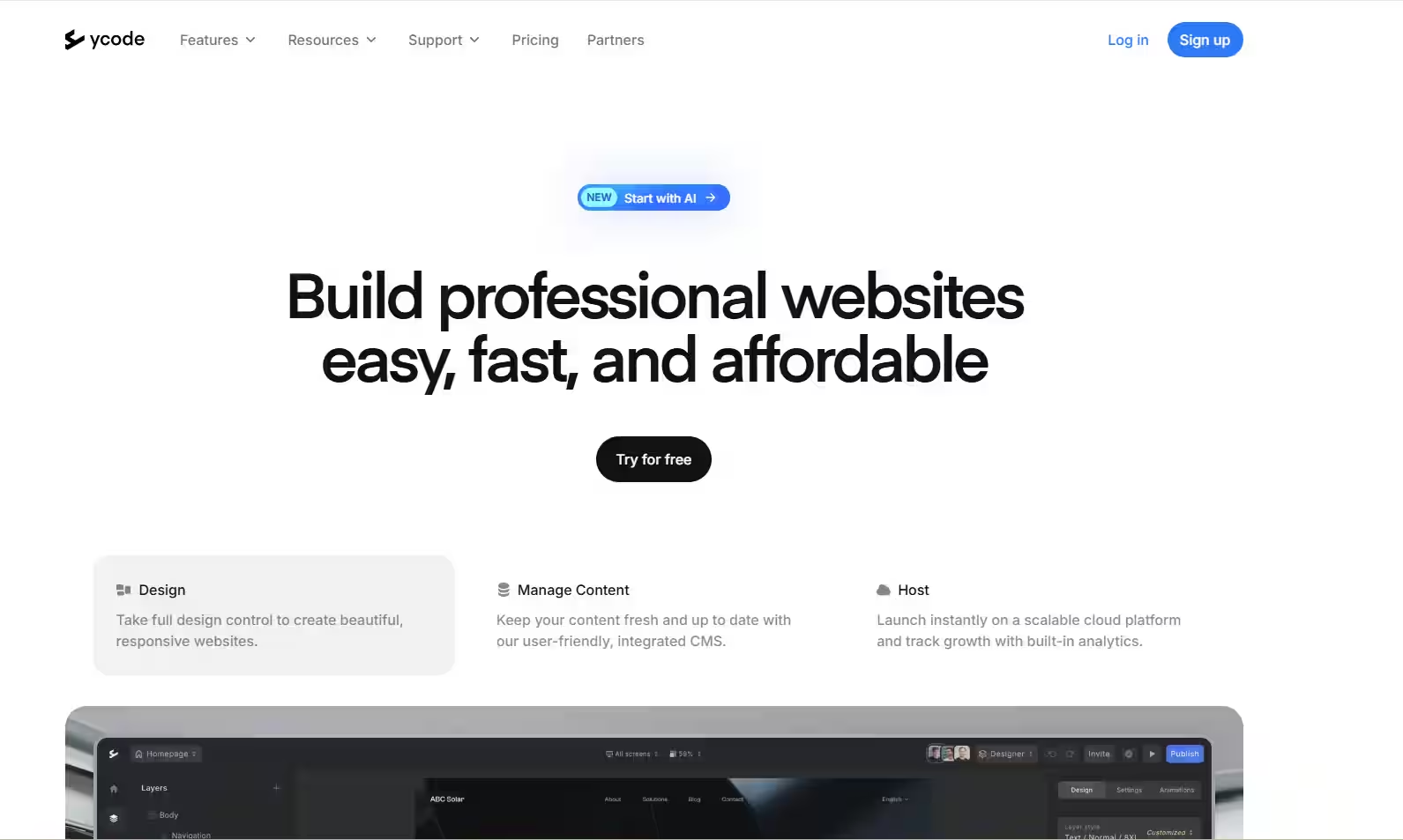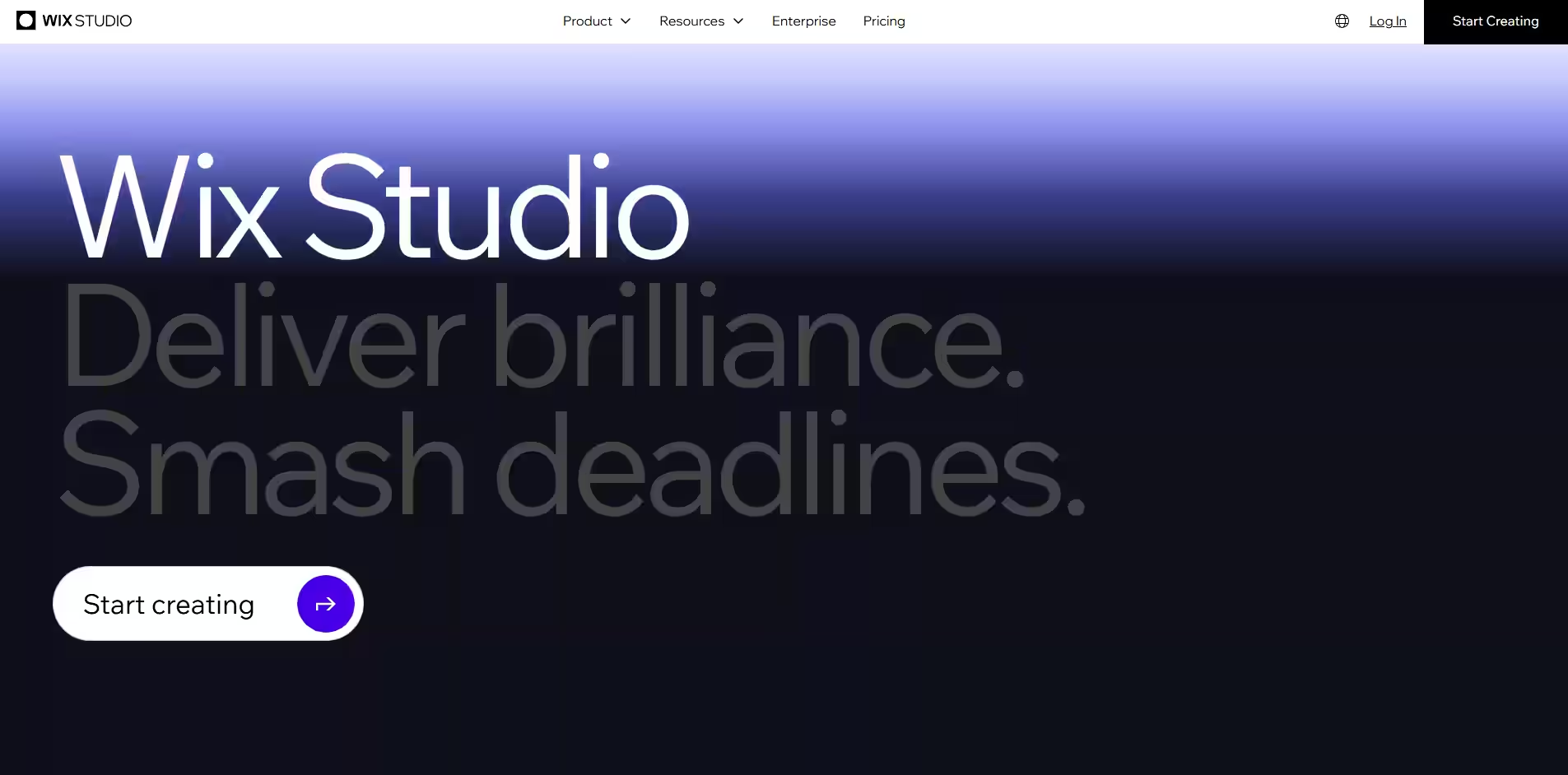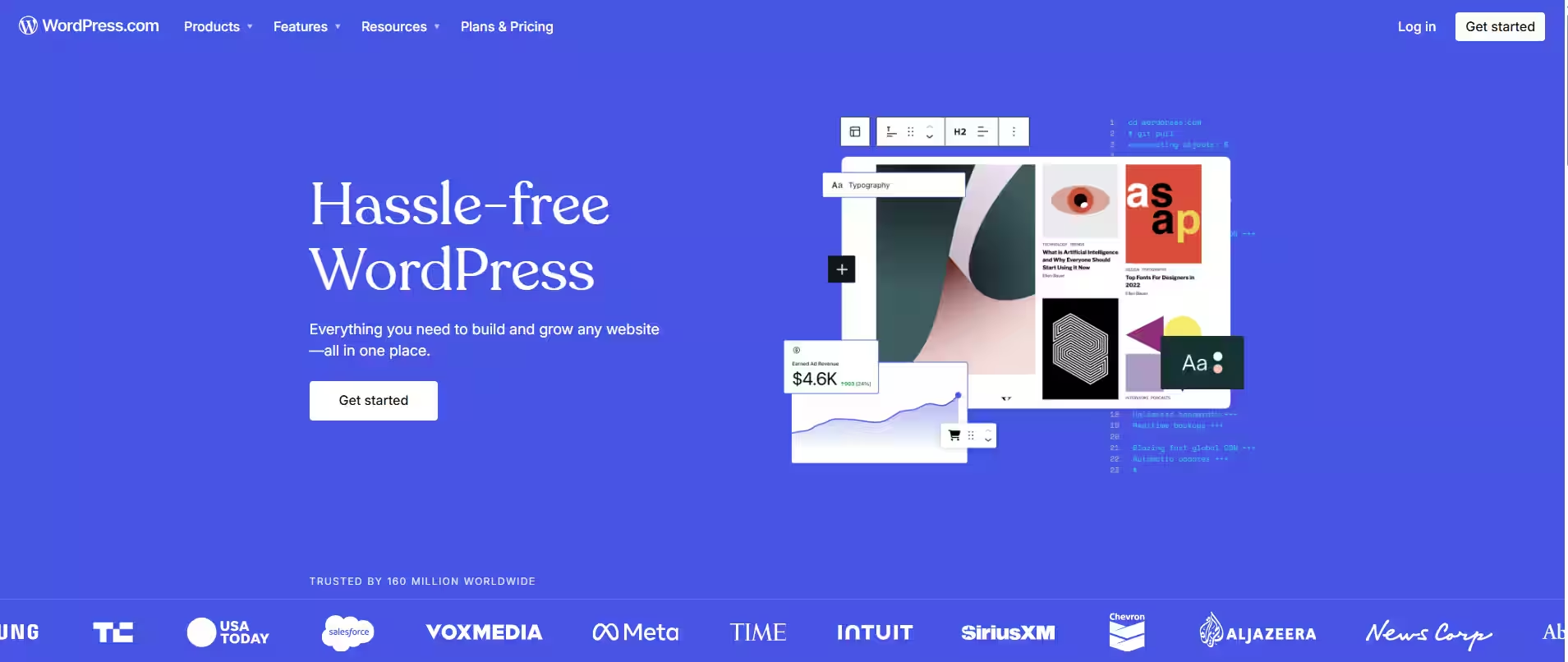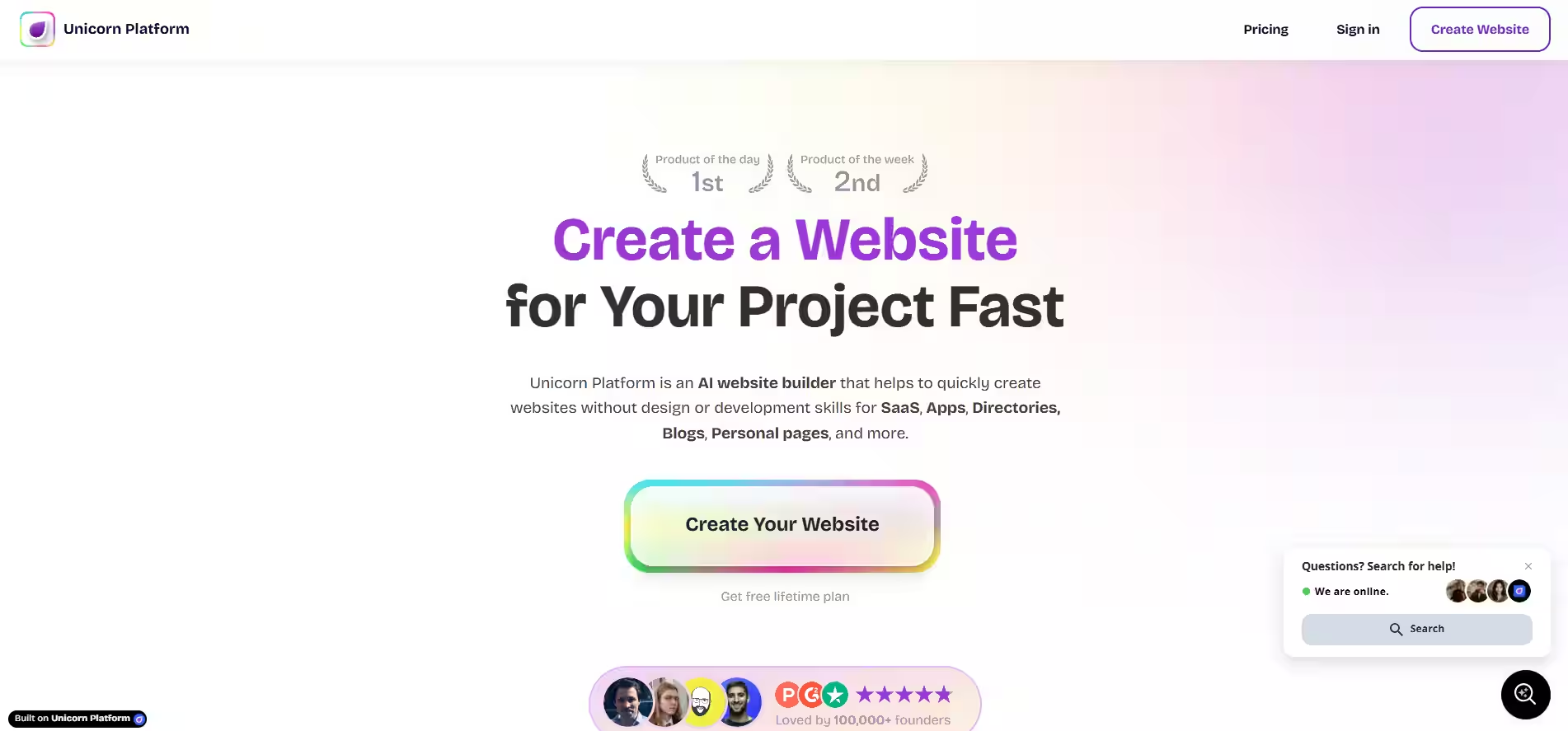Webflow is popular, no doubt. It’s sleek, powerful, and made for designers who want full control without touching code. But it’s not for everyone. Whether you're worried about cost, ease of use, or scalability, there are plenty of Webflow alternatives that offer similar (or better) features—some even for free.
In this guide, we’ll walk through the top Webflow competitors—from powerful CMS platforms to beginner-friendly no-code builders. Whether you're looking for a Webflow free alternative, an open-source tool, or something better suited for ecommerce or blogging, this post is your one-stop solution.
Why Look for Webflow Alternatives?
Webflow is powerful, no doubt. But it’s not perfect for everyone.
Many users love its visual editor, but the pricing can be a dealbreaker. Plans start at $14/month, but if you want CMS features or ecommerce, you’ll pay more—up to $42/month or higher . For startups, freelancers, or hobbyists, that’s a stretch.
The learning curve is another concern. Webflow isn’t plug-and-play. Even designers sometimes struggle to fully master interactions, flex grids, or CMS bindings. For beginners, it can feel overwhelming fast.
Another issue? Limited scalability for content-heavy or ecommerce-driven websites. While it offers some ecommerce features, they’re not as robust as platforms like Shopify. For growing businesses, this can cause friction.
So if you’re asking "Is Webflow the best?"—the answer really depends on your goals. If cost, ease of use, or advanced ecommerce is a concern, exploring Webflow alternatives is a smart move.
Who is Webflow Best For—and When It Might Not Be Ideal
Webflow is designed with professional designers, agencies, and no-code developers in mind. If you love design freedom, build client sites, or want pixel-perfect control without writing code, it’s fantastic.
But it’s not ideal for everyone.
If you’re a freelancer on a tight budget, you might prefer a Webflow free alternative like Dorik or Carrd. These tools offer simple visual builders without the cost.
For bloggers or content creators, Webflow’s CMS isn’t as flexible as WordPress or Ghost. You may hit SEO or usability limits, especially when publishing frequently or handling multiple authors.
Even small business owners may struggle. Webflow’s ecommerce features are basic. You’ll get better results with platforms like Shopify or Wix Studio, which are tailored to selling online.
So, while Webflow powers over 486,000 live websites, it’s not a one-size-fits-all solution. There are plenty of sites like Webflow that might serve your specific use case better.
Top Webflow Alternatives for 2025
While Webflow remains a strong player in the no-code website builder market, it's not the only option available. In 2025, many small businesses and freelancers are seeking alternatives that offer better pricing, user-friendly interfaces, or stronger e-commerce capabilities. Here’s a comprehensive look at the top contenders for Webflow alternatives.
1. Ycode
Ycode is a fresh entrant in the market, but it has quickly gained traction with its modern, intuitive interface. Designed for both designers and content editors, Ycode stands out as a Webflow competitor for teams looking for an efficient and affordable website-building platform.

Key Features
- Visual design tools with built-in animations
- Powerful CMS for easy content management
- Team collaboration at no extra cost
- Responsive controls for all devices
- Advanced form builder
Pros
- Free workspaces and user management (unlike Webflow)
- Easy to learn, even for beginners
- Affordable, Pay only for hosting
- Full control without coding
Cons
- Newer platform, so the community is still growing
- Fewer templates than established competitors
Why Choose Ycode?
Ycode is perfect if you want a modern, affordable, team-friendly website builder. It’s a top Webflow alternative for startups and agencies who want to save on costs and collaborate easily.
Pricing
Hosting plans start at $5/month. Free workspaces for team members.
2. Framer
Framer is known for its design-first approach and is a favorite among designers who want to prototype and build visually stunning websites.

Key Features
- Advanced animation and interaction tools
- Intuitive drag-and-drop editor
- Built-in CMS for content updates
- Responsive design controls
Pros
- Great for designers who want to impress clients
- Fast prototyping and live previews
- Easy to use for both static and dynamic sites
Cons
- Limited e-commerce features
- Can be pricey for advanced features
Why Choose Framer?
Choose Framer if you value design flexibility and want to create visually impressive websites. It’s a strong Framer vs Webflow choice for creative professionals looking to push the limits of design.
Pricing
Free plan available. Paid plans start at $10/month for more features.
3. Wix Studio
Wix Studio is Wix’s answer to Webflow, offering advanced features aimed at agencies and freelancers who want more control and customization over their projects.

Key Features
- Drag-and-drop editor with advanced customization
- Hundreds of templates and apps
- Team collaboration features
- Strong SEO and analytics tools
Pros
- Easy to use, even for beginners
- Many third-party integrations
- Great for e-commerce and marketing sites
Cons
- Can get expensive with add-ons
- Not as flexible as Webflow for complex animations
Why Choose Wix Studio?
Wix Studio is ideal if you want a balance of ease and power. It’s one of the best website builders for small businesses and agencies that need a blend of customization and simplicity.
Pricing
Free plan available. Paid plans start at $12/month.
4. WordPress
WordPress is the world’s most popular content management system (CMS), known for its flexibility and open-source nature. It powers over 40% of all websites and remains a strong contender as a Webflow alternatives open source option.

Key Features
- Thousands of themes and plugins
- Full control over design and functionality
- Strong SEO and blogging tools
- Large, active community
Pros
- Highly customizable
- Great for blogs, portfolios, and business sites
- Free to use, but you pay for hosting and premium features
Cons
- Steeper learning curve for beginners
- Requires more maintenance
Why Choose WordPress?
WordPress offers endless customization possibilities and strong SEO tools. It’s perfect for those who want full control over their website and are looking for an open-source alternative to Webflow.
Pricing
WordPress is free, but hosting and premium features cost extra. Expect to pay $4–$25/month for shared hosting.
5. Squarespace
Squarespace is the go-to platform for anyone who wants a beautiful website quickly. Trusted by over 4 million websites, Squarespace is known for its polished templates and intuitive drag-and-drop editor. It's perfect for users who want to impress without the hassle.

Key Features
- Gorgeous, ready-made templates
- Easy-to-use editor
- Built-in SEO and marketing tools
- Reliable hosting and security
- Solid blogging and e-commerce features
Pros
- Super easy for beginners
- 24/7 customer support
- All-in-one solution for small sites
- Stunning design out of the box
Cons
- Less design flexibility than Webflow
- Fewer advanced customization options
- No free plan—just a 14-day trial
Why Choose Squarespace?
Pick Squarespace if you want a stunning, hassle-free website. It’s perfect for portfolios, blogs, and small businesses. If you value ease over deep customization, this is your best website builder.
Pricing
Plans start at $16/month. No free plan, but a 14-day free trial.
6. Shopify (For E-commerce)
Shopify powers over 4.4 million active stores worldwide, making it the top choice for anyone serious about selling online. If you want to launch an e-commerce site, Shopify is hard to beat.

Key Features
- Powerful online store builder
- Hundreds of professional themes
- Secure checkout and payment options
- Built-in marketing and analytics
- Huge app store for extra features
Pros
- Best-in-class for e-commerce
- Easy to set up and manage
- Massive app ecosystem
- Reliable uptime and security
Cons
- Not ideal for non-store websites
- Transaction fees unless you use Shopify Payments
- Can get expensive with add-ons
Why Choose Shopify?
Choose Shopify if you want to sell online. It’s the ultimate e-commerce website builder for startups and established brands.
Pricing
Plans start at $29/month. Free trial available.
7. Dorik
Dorik is a rising star among no-code website builders. It’s designed for speed and simplicity, making it a great Webflow alternative for startups and solo creators who want to get online quickly.

Key Features
- Drag-and-drop builder
- Free and paid templates
- Built-in CMS and blogging
- Fast, responsive designs
- Easy SEO tools
Pros
- Affordable pricing
- Super easy to use
- Great for landing pages and simple sites
- Good for beginners and small teams
Cons
- Fewer advanced features than Webflow
- Limited integrations
- Not as powerful for complex sites
Why Choose Dorik?
Pick Dorik if you want a fast, easy, and inexpensive way to get online. It's perfect for landing pages, portfolios, and small business sites.
Pricing
Free plan available. Paid plans start at $14/month.
8. Unicorn Platform
Unicorn Platform is built specifically for startups and SaaS founders. It’s a niche builder focused on fast product launches, with built-in features for app and service launches.

Key Features
- Drag-and-drop builder
- Built-in analytics and forms
- Pre-built sections for startups
- Easy integrations with tools like Calendly and Stripe
- Responsive and fast
Pros
- Perfect for startups and SaaS
- Fast setup and launch
- Affordable pricing
- Built-in marketing features
Cons
- Not as flexible as Webflow
- Limited design options
- Best for specific use cases
Why Choose Unicorn Platform?
Choose Unicorn Platform if you’re a startup founder or launching a SaaS. It’s the fastest way to get a professional site online.
Pricing
Free plan available. Paid plans start at $9/month.
9. Typedream
Typedream is a relatively new player in the no-code website builder world, launched in 2021. It has quickly gained popularity, especially among creators and startups, thanks to its simplicity and Notion-style workflow. Over 100,000 sites have been built using Typedream, making it an appealing choice for those who want an easy-to-manage online presence.

Key Features
- AI-powered website creation
- Drag-and-drop editor
- Notion integration
- SEO tools and analytics
- Team collaboration
Pros
- Super easy to use
- Fast setup
- Notion integration
- Affordable pricing
- Good customer support and growing community.
Cons
- Limited templates
- Not ideal for online stores.
- Not as flexible as Webflow or Framer.
- Smaller community
Why Choose Typedream?
Pick Typedream if you want a fast, simple, and affordable website builder. It's perfect for landing pages, personal branding, and content-driven sites. If you’re a fan of Notion, you’ll feel right at home with its seamless integration.
Pricing
- Free plan: Basic features, good for testing.
- Launch plan: $15/month (unlimited pages, custom domain, SEO, analytics).
- Grow plan: $49/month (protected pages, advanced analytics, more Notion features).
10. Super
Super is a rising star for anyone who wants to turn Notion pages into beautiful, public websites. It’s specifically designed for creators, startups, and remote teams who already use Notion for content management and want an easy, no-code way to publish it online. Super is lightweight, fast, and focused on simplicity.

Key Features
- Notion-powered websites.
- Custom domains
- SEO tools
- Design customization
- Privacy controls
Pros
- Ultra-easy setup
- Seamless Notion integration
- Affordable pricing
- Responsive design
Cons
- Limited design flexibility
- No e-commerce
- Notion dependency
- Smaller community: Still growing.
Why Choose Super?
Choose Super if you want to quickly turn your Notion content into a website. It's ideal for portfolios, blogs, and team sites. If you already use Notion, Super makes it incredibly easy to publish content online.
Pricing
- Free plan: Basic features, with Super branding.
- Personal plan: $16/month (custom domain, advanced SEO).
- TPro plan: $28/month (multiple sites, more collaborators).
Hosting and Migration Tips for Switching from Webflow
If you're planning to switch from Webflow to another platform, you're not alone. Many creators move to other Webflow alternatives for cost, flexibility, or control. But transitioning your site smoothly takes more than just copying and pasting. Let’s walk through the core steps to keep your SEO intact and your website running without hiccups.
Exporting Webflow Sites
Webflow lets you export static HTML, CSS, JS, and assets—but only for non-CMS pages. You won’t be able to export dynamic CMS content or ecommerce functionalities. To export:
- Go to your Webflow project.
- Click on the export icon in the top bar.
- Download the full site package.
This works well for basic landing pages, portfolios, and static content. For CMS-based websites, you’ll need to manually copy data or use third-party tools like Udesly or CSV importers available in platforms like WordPress.
If you're switching to an open-source website builder or Webflow free alternative, exporting clean code can be a huge time-saver.
Choosing the Right Hosting Provider
Once your files are ready, it’s time to find the right host.
If you're moving to WordPress, platforms like SiteGround, Kinsta, or Cloudways offer high performance with easy scaling. For static sites, Netlify, Vercel, or GitHub Pages are great choices—especially if you're moving to open-source Webflow alternatives like Jekyll or Hugo.
Make sure your hosting offers:
- SSL certificates (HTTPS)
- CDN support for speed
- Daily backups and security monitoring
- 99.9% uptime reliability
A good host directly impacts loading speed and SEO rankings. Google confirms that site speed affects user experience and search visibility (Google Page Experience).
Redirects and SEO Preservation
One of the biggest mistakes during migration is ignoring redirects.
Your old Webflow URLs might differ from your new site's structure. If you don’t set up proper 301 redirects, you risk losing organic traffic and SEO rankings. Use tools like Yoast SEO (WordPress) or built-in redirect settings in platforms like Squarespace or Shopify.
Check that:
- Your main pages and blog posts have 1:1 URL mapping.
- Meta tags and alt attributes remain intact.
- Canonical tags are updated.
- Google Search Console is reverified with the new domain.
Tools like Ahrefs or Screaming Frog help audit broken links post-migration.
Criteria to Choose the Best Webflow Alternative
Not every website builder fits every user. That’s why when looking for the best Webflow alternatives, it’s important to compare based on real needs—not just flashy interfaces. Whether you’re a beginner, a freelancer, or a growing brand, you should focus on tools that save time, support growth, and offer solid value. Let’s break it down by what truly matters.
Ease of Use
If a platform isn’t easy to understand, it’s not worth your time.
Webflow has a steep learning curve, especially for beginners. Alternatives like Wix Studio or Dorik offer a more intuitive drag-and-drop interface. Carrd is another lightweight option for simple one-page sites. You don’t need to know code to build great things—just the right platform.
Design Flexibility and UI Control
Love pixel-perfect design? You’ll want a builder that gives full control.
Framer and WordPress + Elementor are top picks here. They offer flexible canvases, custom animations, and responsive editing. If best Webflow design is your priority, these Webflow competitors give you the same freedom—sometimes with fewer limitations.
SEO Features and Optimization Capabilities
Good design is useless without visibility.
Webflow offers clean code, but SEO tools can feel limited. WordPress is the king of content-driven SEO, with tools like Yoast or RankMath. Squarespace and Shopify also include structured SEO options that help your site rank. Look for platforms with proper URL control, meta tags, alt text, and mobile responsiveness—these impact real traffic.
Pricing and Value for Money
Is Webflow worth the cost? That depends on what you’re building.
For many, Webflow’s pricing ($14–$42/month) feels heavy. If you want a Webflow alternative free, try Dorik’s free plan, Carrd’s $19/year, or even self-hosted open-source website builders like Grav. For ecommerce or client projects, Shopify or Framer offer more structured pricing that scales as you grow.
Ecommerce and CMS Features
If you plan to sell online or manage lots of content, CMS power matters.
Webflow’s CMS is clean, but limited. Shopify handles ecommerce better with tools for inventory, shipping, and payments. For content, Ghost and WordPress win with powerful blogging and publishing features. If you need a CMS platform like Webflow, consider these based on your business model.
Open Source vs Proprietary Tools
Want control over your platform and code? Go open source.
Webflow is proprietary, which means you’re locked into their hosting and updates. Open-source options like Grav, Jekyll, and Publii offer more flexibility for developers. They’re ideal for users who want full control, better privacy, or free scalability. If you’re a tech-savvy creator, these tools are worth exploring.
Scalability and Custom Code Support
Your website should grow as your business does.
Webflow supports custom code, but scaling up can get expensive. Platforms like WordPress, Framer, and Shopify are built to handle traffic, advanced features, and third-party integrations with ease. You also get more plugins, community support, and developer freedom.
Hosting, Security, and Uptime
Good hosting is non-negotiable. Speed, security, and uptime all affect trust and SEO.
Webflow hosts your site, but others offer more control. Framer and Squarespace include secure hosting with SSL and CDN. WordPress lets you choose high-performance hosts like SiteGround or Kinsta. Look for platforms with 99.9% uptime, DDoS protection, and automated backups for peace of mind.
Conclusion: Build the Best Website Without Webflow
Webflow isn’t your only option—and it’s not always the best fit. Whether you need a Webflow alternative free, something more beginner-friendly, or a tool that scales better with ecommerce or content, there are plenty of smart choices out there. Platforms like WordPress, Framer, Dorik, and Shopify offer flexibility, speed, and control without the steep learning curve. Each alternative has its own strengths, so choose based on your specific needs. From open-source tools to drag-and-drop simplicity, building a stunning, high-performing website is completely possible—even without Webflow in the picture.














%20to%20Boost%20Your%20Own%20Sale_.avif)







